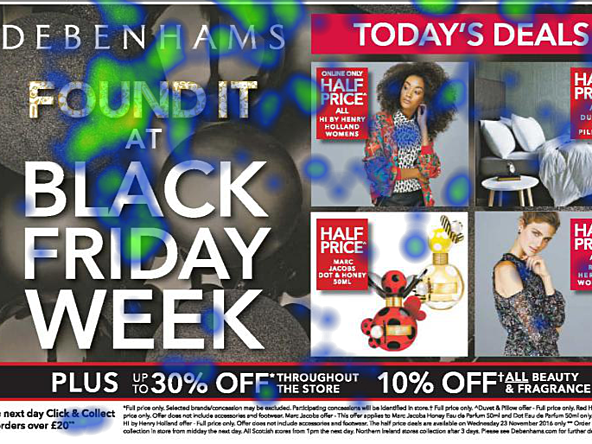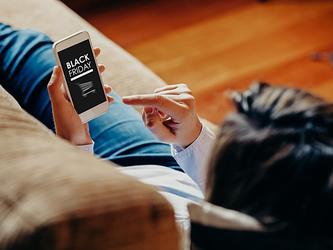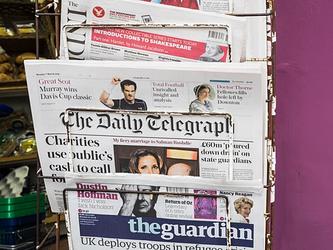Who won Black Friday?

It’s safe to say Black Friday is no longer a one day phenomenon. In 2016, it feels more like Black Friday Month, with advertisers beginning their campaigns earlier and the time that offers are available inched out from a day, to a long weekend, or in some cases a week or more.
I’m writing this as ‘Cyber Monday’ draws to a close and the deals (and ads) are still rolling. From cut price TVs, discounted furniture to fashion bargains – you name it, it’s probably on sale.
What makes Black Friday different to other seasonal occurrences is that advertising IS the event. This American import is entirely driven by consumer appetite and brands’ ability to whip up a sense of occasion. It’s timing – just as it becomes publicly acceptable to start Christmas shopping – goes hand in hand with the urgency created by the whole event .
You wouldn’t describe Christmas or Bonfire Night as an event. They’re occasions embedded into our annual cycle over centuries, to become calendar stalwarts. I’m sure you don’t need me to remind you that they each have their roots in stories far larger and more complex than the gift-giving and firework purchasing mania they generate.
By comparison, Black Friday is an entirely brand-made, self-fulfilling phenomenon. The more popular it gets and the more media exposed, the more urgency is felt by consumers. Buy now or regret it. On Friday my Mum emailed me a link to a discounted electric hand blender on Amazon with ‘If you’re stuck for Christmas ideas…’ in the subject line. I made the mistake of waiting until Sunday (so sure was I that Black Friday was now at least a week long), by which time said whisk was back to its original price.
It’s happened to me and it’s probably happened to you. It’s what makes Black Friday so addictive. That urgency. The chance of getting that mega bargain. In this context, newspapers come into their own. As daily publications in print and purveyors of up-to-the minute online news, newsbrands have always been effective at allowing brands to align themselves with highly-topical events. They fuel the sense of anticipation and, in the case of Black Friday, act as the window displays for shoppers to peruse a brand’s offers.
As Newsworks’ insight director, I know the importance of quantifiable proof and so we teamed up with Lumen Research for eye-tracking tests to explore the role that newsbrands play in the Black Friday milieu. Eye-tracking uses implicit responses to gain insights into human behaviour by measuring automatic reactions; allowing us to see ‘what people actually do, not what they say they do', as Lumen succinctly put it.
The research found that more than 287,000 hours were spent with Black Friday ads via newsbrands, making for a 38% increase on the amount of time spent on a normal day. Each ad generated a dwell time of 2.3 seconds on average, while Black Friday branded ads significantly out-performed those which weren’t, delivering a 28% higher dwell time.
Of the time spent reading newspapers in total, 10% was used directly looking at and engaging with ads (compared with 7% on a normal day) indicating that consumers were shopping in them specifically for Black Friday offers.
So who actually won Black Friday in the press? Our tracking shows that the brand which performed best on a range of brand metrics was Debenhams, generating the most attention in terms of both stand-out and time spent. Its strong Black Friday branding paired with its clear depiction of the products on offer generated attention in a very busy market.
Overall, what this research does is underline the intimate and intensified relationship consumers have with the Black Friday ads which inundate newsbrands at this time of year. It also demonstrates a link between attention and intent. Most of the ads are hugely centred on calls to action. They’re not about conveying an experience, lifestyle or creating a particular image. It’s all about shifting stock and the fact that they can deliver a 28% higher dwell time than non-Black Friday ads, indicates that potential consumers are considering what’s on offer (literally).
Denise Turner is insight director at Newsworks

We hope you enjoyed this article.
Research Live is published by MRS.
The Market Research Society (MRS) exists to promote and protect the research sector, showcasing how research delivers impact for businesses and government.
Members of MRS enjoy many benefits including tailoured policy guidance, discounts on training and conferences, and access to member-only content.
For example, there's an archive of winning case studies from over a decade of MRS Awards.
Find out more about the benefits of joining MRS here.













0 Comments